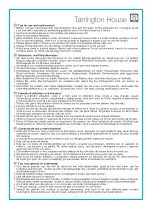
5
5. Limitations of Smoke Alarms
WArnIng: PleAse reAd cAreFUlly And thoroUghly
•
Life safety from fire in residential occupancies is based primarily on early notification to occupants of the need to
escape, followed by the appropriate egress actions by those occupants.
•
Some people may be too old or young, or physically or mentally impaired such that they can not escape even when
warned early enough, where escape should be possible. For these people, other strategies such as a level of suppres-
sion protection in place or assisted escape or rescue are necessary in addition to to a smoke alarm.
•
Subject to applicable legislative and regulatory requirements, leading authorities recommend that both ionization
and photoelectric smoke alarms be installed to help insure maximum detection of the various types of fires that can
occur within the home. Ionization sensing alarms may
detect invisible fire particles (associated with fast flaming fires) sooner than photoelectric alarms. Photoelectric
sensing alarms may detect visible fire particles (associated with slow smoldering fires) sooner than ionization alarms.
•
A battery powered alarm must have a battery of the specified type, in good condition and installed properly
(This model has a sealed battery).
•
Smoke alarms must be tested regularly to make sure the battery and the alarm circuits are in good operating condition.
•
Smoke alarms cannot provide an alarm if smoke does not reach the alarm. Therefore, smoke alarms may not sense
fires starting in chimneys, walls, on roofs, on the other side of a closed door or on a different floor.
•
If the alarm is located outside the bedroom or on a different floor, it may not wake up a sound sleeper.
•
The use of alcohol or drugs may also impair one’s ability to hear the smoke alarm. For maximum protection, a smoke
alarm should be installed in each sleeping area on every level of a home.
This alarm is not intended to alert hearing impaired individuals.









































